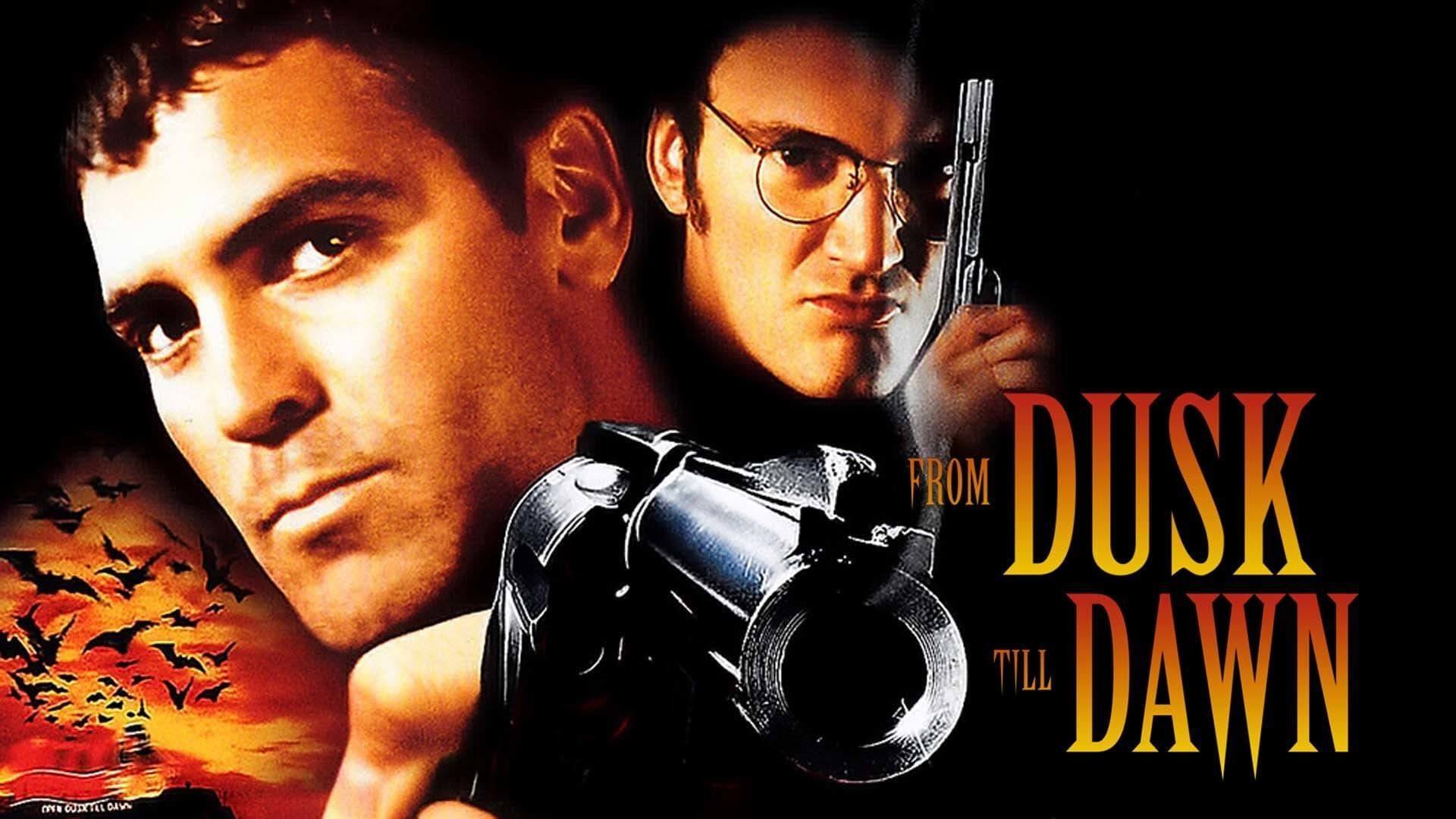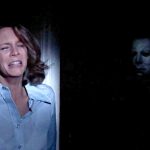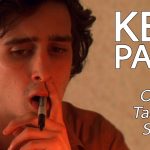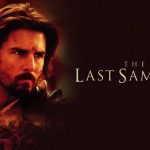From Dusk Till Dawn (1996)

From Dusk Till Dawn, directed by Robert Rodriguez and released in 1996, is a genre-blending film that seamlessly combines elements of crime thriller, dark comedy, and horror. Written by Quentin Tarantino, who also stars in the film, From Dusk Till Dawn is renowned for its unique narrative structure, dynamic character development, and genre-defying plot twists. This essay explores the film’s distinctive qualities, including its thematic content, genre shifts, and cinematic techniques, to offer a comprehensive understanding of its impact and significance in the world of film.
The film begins as a gritty crime thriller, focusing on the story of the Gecko brothers, Seth (George Clooney) and Richie (Quentin Tarantino), two criminals on the run after a series of bank robberies. Their journey is marked by violence, desperation, and a sense of looming danger. The brothers take a family, the Fullers—father Jacob (Harvey Keitel), daughter Kate (Juliette Lewis), and son Scott (Ernest Liu)—hostage as they cross the border into Mexico, seeking refuge at a remote strip club, the Titty Twister, where they plan to lay low until nightfall. The initial part of the film is characterized by its gritty, realistic portrayal of crime and the tense dynamics between the characters.

The transition from crime thriller to horror is one of the film’s most distinctive features. As the story progresses and the night falls, the Titty Twister reveals itself to be more than just a seedy establishment—it is a haven for vampires. The film undergoes a radical shift in tone as it transforms into a horror film filled with gore, supernatural elements, and intense action sequences. This unexpected genre shift serves as both a narrative surprise and a commentary on the unpredictable nature of the film.
Quentin Tarantino’s screenplay introduces a darkly humorous edge to the film, blending violence and comedy in a way that is both shocking and entertaining. Tarantino’s character, Richie Gecko, is depicted as a psychopathic figure with a penchant for sadistic humor, while George Clooney’s Seth Gecko is portrayed as a charismatic yet morally ambiguous anti-hero. The chemistry between the Gecko brothers adds depth to the film, showcasing the complexity of their relationship and the underlying tension that drives their actions.

The Titty Twister, as a setting, plays a crucial role in the film’s transition from crime thriller to horror. The strip club becomes the central battleground for the film’s climactic confrontation, with the transformation of its patrons into bloodthirsty vampires providing a dramatic shift in the film’s narrative. The visual design of the Titty Twister, with its dark, dingy interiors and neon lighting, contributes to the film’s atmosphere of sleaze and menace, enhancing the sense of foreboding as the night unfolds.
Robert Rodriguez’s direction is characterized by its energetic and stylistic approach. The film features dynamic camera work, rapid editing, and a distinctive visual style that captures the chaos and intensity of the narrative. Rodriguez’s use of practical effects and makeup enhances the film’s horror elements, with elaborate creature designs and gory scenes that contribute to its reputation as a cult classic. The film’s action sequences are meticulously choreographed, blending elements of horror and martial arts to create a visually striking and adrenaline-pumping experience.

The film’s score, composed by Graeme Revell, adds to the tension and atmosphere of the film. The music incorporates elements of rock, blues, and traditional horror scores, creating a soundscape that complements the film’s genre-blending nature. The soundtrack also includes a selection of tracks that enhance the film’s mood and reflect its shift in tone from crime thriller to horror.
Thematically, From Dusk Till Dawn explores issues of morality, violence, and survival. The characters are confronted with their own moral dilemmas as they navigate the treacherous world of the Titty Twister and face the consequences of their actions. The film’s depiction of violence and its impact on the characters serves as a commentary on the nature of evil and the choices individuals make in the face of danger.

In conclusion, From Dusk Till Dawn (1996) is a genre-defying film that combines elements of crime thriller, dark comedy, and horror to create a unique and memorable cinematic experience. Through its unexpected genre shifts, dynamic character development, and stylistic direction, the film stands out as a cult classic that challenges conventional genre boundaries. Robert Rodriguez’s energetic direction and Quentin Tarantino’s sharp screenplay contribute to the film’s impact, making it a significant and influential work in the realms of crime and horror cinema. The film’s ability to seamlessly blend disparate genres while delivering both thrills and laughs demonstrates its enduring appeal and significance.











